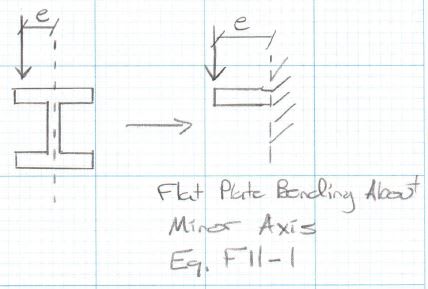Hello everyone
I have read several posts here regarding local flange bending due to concentrated load due to wheel loads on bottom flange. But I have not come across any discussion on Steel I Beam supporting precast planks or load Bearing walls (Lets say 10k/ft)
My questions are
1) how do you check for whether a steel beam with precast planks sitting on top flange or a heavy load bearing wall sitting eccentrically on a steel beam works with local flange bending or not?
2) Section J-10 addresses all local issues in flange and web but it categorically says flange bending is only affected by tensile forces! Why is that the case? Will I check for local bending in flange if the precast planks were to bear on the bottom flange since that would then become tensile force acting on the bottom flange (My interpretation of tensile and compression force in the context of local flange bending is that force acting on any flange (top or bottom) that tends to compress the web would be compression force and the one that acts away from the web i.e. tries to pull the flange away from the web is tensile force
3) Last question! - What is the solution for local flange bending? Doubler plates and transverse stiffeners would increase shear strength but would either of the two help for flange bending? If yes, then how and through what load path
Thank you very much to the experts on this site!
I have read several posts here regarding local flange bending due to concentrated load due to wheel loads on bottom flange. But I have not come across any discussion on Steel I Beam supporting precast planks or load Bearing walls (Lets say 10k/ft)
My questions are
1) how do you check for whether a steel beam with precast planks sitting on top flange or a heavy load bearing wall sitting eccentrically on a steel beam works with local flange bending or not?
2) Section J-10 addresses all local issues in flange and web but it categorically says flange bending is only affected by tensile forces! Why is that the case? Will I check for local bending in flange if the precast planks were to bear on the bottom flange since that would then become tensile force acting on the bottom flange (My interpretation of tensile and compression force in the context of local flange bending is that force acting on any flange (top or bottom) that tends to compress the web would be compression force and the one that acts away from the web i.e. tries to pull the flange away from the web is tensile force
3) Last question! - What is the solution for local flange bending? Doubler plates and transverse stiffeners would increase shear strength but would either of the two help for flange bending? If yes, then how and through what load path
Thank you very much to the experts on this site!

